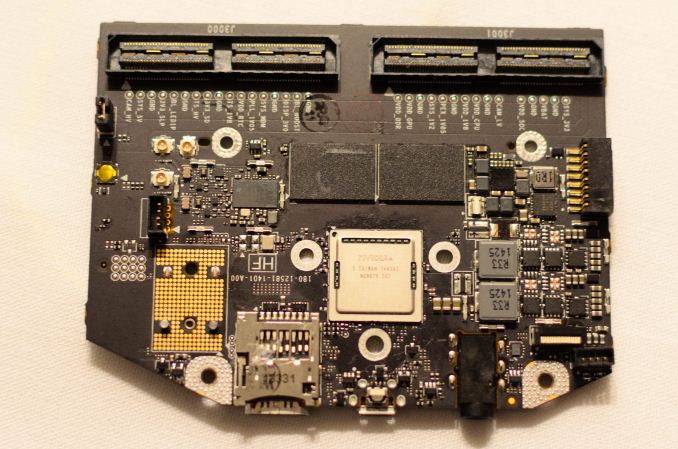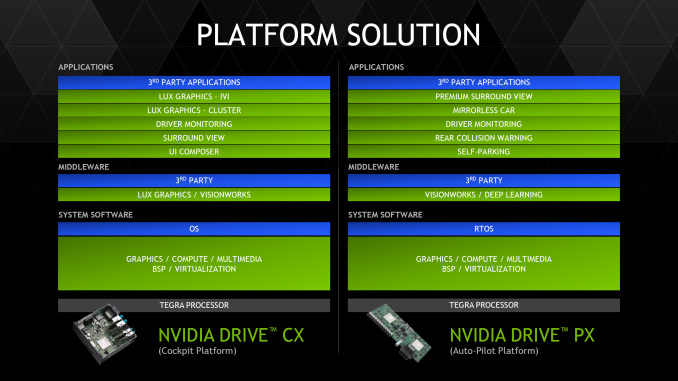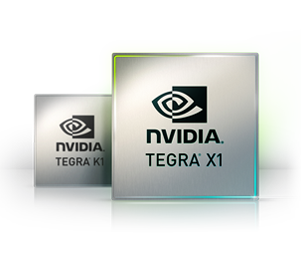NVIDIA Tegra X1 Preview & Architecture Analysis
by Joshua Ho & Ryan Smith on January 5, 2015 1:00 AM EST- Posted in
- SoCs
- Arm
- Project Denver
- Mobile
- 20nm
- GPUs
- Tablets
- NVIDIA
- Cortex A57
- Tegra X1
Final Words
With the Tegra X1, there have been a great deal of changes when compared to Tegra K1. We see a move from Cortex A15 to A57 on the main cluster, and a move from a single low power Cortex A15 to four Cortex A53s which is a significant departure from previous Tegra SoCs. However, the CPU design remains distinct from what we see in SoCs like the Exynos 5433, as NVIDIA uses a custom CPU interconnect and cluster migration instead of ARM’s CCI-400 and global task scheduling. Outside of these CPU changes, NVIDIA has done a great deal of work on the uncore, with a much faster ISP and support for new codecs at high resolution and frame rate, along with an improved memory interface and improved display output.
Outside of CPU, the GPU is a massive improvement with the move to Maxwell. The addition of double-speed FP16 support for the Tegra X1 helps to improve performance and power efficiency in applications that will utilize FP16, and in general the mobile-first focus on the architecture makes for a 2x improvement in performance per watt. While Tegra K1 set a new bar for mobile graphics for other SoC designers to target, Tegra X1 manages to raise the bar again in a big way. Given the standards support of Tegra X1, it wouldn’t be a far leap to see more extensive porting of games to a version of SHIELD Tablet with Tegra X1.
NVIDIA has also made automotive applications a huge focus in Tegra X1 in the form of DRIVE CX, a cockpit computing platform, and DRIVE PX, an autopilot platform. Given the level of integration and compute present in both DRIVE CX and PX, there seems to be a significant amount of value in NVIDIA’s solutions. However, it remains to be seen whether OEMs will widely adopt these solutions as car manufacturers can take multiple years to implement a new SoC. Compared to the 3-4 month adoption rate of an SoC in a phone or tablet, it's hard to pass any judgment on whether or not NVIDIA's automotive endeavors will be a success.
Overall, Tegra X1 represents a solid improvement over Tegra K1, and now that NVIDIA has shifted their GPU architectures to be targeted at mobile first, we’re seeing the benefits that come with such a strategy. It seems obvious that this would be a great SoC to put in a gaming tablet and a variety of other mobile devices, but it remains to be seen whether NVIDIA can get the design wins necessary to make this happen. Given that all of the high-end SoCs in the Android space will be shipping with A57 and A53 CPUs, the high-end SoC space will see significant competition once again.













194 Comments
View All Comments
kron123456789 - Monday, January 5, 2015 - link
Not exactly. 8800GTX has much more TMUs and much faster memory.GC2:CS - Monday, January 5, 2015 - link
Not exactly in a phone... Rather in a tablet or a notebook.PC Perv - Monday, January 5, 2015 - link
Perhaps you guys can carry a power bank of known quality to this type of demo and use it instead of whatever the demo unit is hooked up to? I was appalled to see a Nexus 9's dropping battery percentage while it was being charged at a local Microcenter. Granted I do not know what kind of power supply it was hooked up to, but all it was running was a couple of Chrome tabs.Maleficum - Monday, January 5, 2015 - link
I simply cannot trust anything nVidia says. The K1 Denver is such a benchmark cheater.ajangada - Monday, January 5, 2015 - link
Umm... What?chizow - Monday, January 5, 2015 - link
Fun fact: Nvidia was the only GPU/SoC vendor that *DIDN'T* cheat in AnandTech's recent benchmark cheating investigations. ;)http://www.anandtech.com/show/7384/state-of-cheati...
techconc - Monday, January 5, 2015 - link
@chizow: Another fun fact: The article you reference was specifically addressing the state of cheating among Android OEMs. In fact, the article specifically states "With the exception of Apple and Motorola, literally every single OEM we’ve worked with ships (or has shipped) at least one device that runs this silly CPU optimization." Perhaps you're going to fall back on weasel words and claim that neither Motorola nor Apple are GPU/SoC vendors. If that's the case, then you should also note that this kind of cheating is done at the OEM level, not the SoC vendor level.chizow - Monday, January 5, 2015 - link
It was actually a simple oversight, I thought I mentioned Android SoC/GPU vendor but it may be because I saw it in the link instead.Maleficum - Tuesday, January 6, 2015 - link
The link you gave doesn't contain anything related to the Denver core that cheats at the firmware level.Of course, it's called "optimization" by nVidia.
chizow - Tuesday, January 6, 2015 - link
Proof of such cheats would be awesome, otherwise I guess we can just file it under FUD.